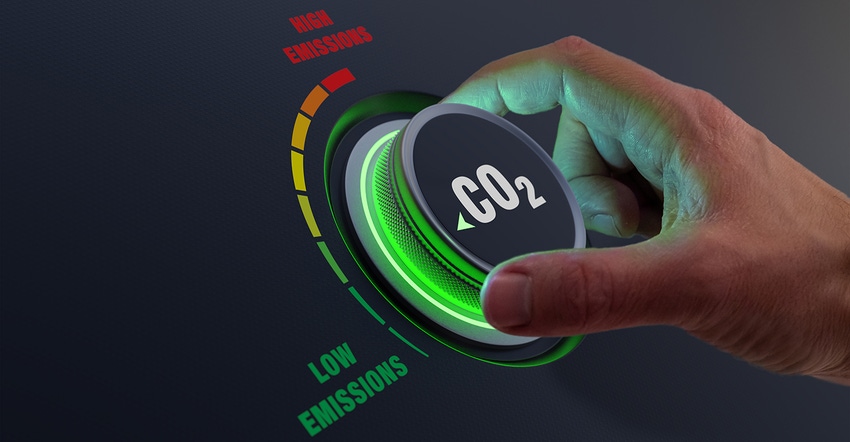Net-Zero Vehicle Emissions Reachable by 2050, Says BNEF Report
A stronger push is still needed with heavy trucks, in particular, which are lagging behind in the race to net zero.
July 4, 2023

Electric vehicle (EV) sales are set to surge over the next few years, rising from 10.5 million in 2022 to almost 27 million in 2026, according to BloombergNEF’s (BNEF) “Electric Vehicle Outlook 2023.” The report forecasts the EV share of global new passenger vehicle sales will jump from 14% in 2022 to 30% in 2026.
Shares in some markets are much higher, with EVs reaching 52% of sales in China and 42% in Europe. Some European car markets are moving even faster, with Nordic nations at 89% and Germany at 59%.
In the United States, a major push from the Inflation Reduction Act translates into EVs accounting for nearly 28% of passenger vehicle sales by 2026, up from 7.6% in 2022. The EV adoption gap between wealthy and emerging economies continues to grow in the near term, but Japan significantly lags other wealthy countries.
Sales of internal combustion engine (ICE) vehicles peaked in 2017 and are now in long-term decline. By 2026, sales of combustion vehicles are forecast to be 39% lower than their peak in 2017.
Charging challenges
While the long-term picture is getting brighter, challenges remain according to BNEF. For example, although public charging infrastructure is growing at pace globally, it still presents a potential barrier to electrifying the last 10 to 20% of the market in many countries. According to the consultant’s Economic Transition Scenario, EVs will reach 44% of global passenger vehicle sales by 2030 and 75% by 2040. After increasing rapidly from 2022 to 2035, EV sales growth will slow down slightly in the late 2030s in the main EV markets like Europe, China, and the United States as they begin to saturate.
While EV sales exhibit a traditional “S-curve” for adoption, each country and region starts on this trajectory at different times. The varied start times and slowdown points between countries means that the global average appears more linear than any individual country. Despite rapid EV adoption, less than 50% of the global passenger vehicle fleet is forecast to be electric by 2040.
Light commercial gets heavy
Electrification is now spreading quickly to all areas of road transport, according to BNEF. Light commercial EV sales are set to rise quickly because of attractive economics, the availability of more models, growing fleet commitments, and city policies, reaching almost 70% of global sales by 2040, led by China.
The economics of electric heavy trucks, meanwhile, is set to improve rapidly throughout the 2020s, becoming as cheap as diesel equivalents even for long-haul applications. However, fuel costs still matter, and natural gas remains economically competitive. Fuel cell truck costs are also forecast to decline, but there is high uncertainty on the trajectory. Overall road freight demand is forecast to rise 46% from 2020 to 2040, highlighting the need for competitive zero-emission options in this segment.
Municipal buses are also electrifying quickly. Europe and the United States are beginning to catch up with China in this market and EVs are predicted to reach 36% and 24% of municipal bus sales, respectively, by 2026. Two- and three-wheeled vehicle sales are also slated to continue to rise in emerging economies and are set to be almost all-electric globally by 2040.
Net-zero road by 2050 possible
The gap between BNEF’s Economic Transition Scenario and the Net-Zero Scenario is smaller than in any of its previous projections. This is due to new and stronger policy support in the United States; early EV progress in several economies like India, Thailand, and Indonesia; growing global investment in charging infrastructure and the battery supply chain; and technology innovations like sodium-ion batteries.
A stronger push is still needed, however. Heavy trucks, in particular, are far behind the net-zero trajectory, according to BNEF, and should be a priority focus for policymakers. Grid investments, grid connections, and permitting processes also need to be streamlined to support the large number of charging points needed for the transition.
Battery investments keep pace
Accompanying increased EV production and larger battery outputs, lithium-battery demand is also set to grow rapidly, approaching 5.7 terawatt hours (TWh) annually by 2035 in BNEF’s Economic Transition Scenario. Meeting this demand requires large but achievable increases in materials, components, and cell production. Over 7.4 TWh of nameplate cell manufacturing capacity is planned by 2025. This is more than projected demand in the same year, but actual excess supply will be lower due to varying utilization rates, commissioning delays, and abandonments.
Assuaging range anxiety
Average EV ranges are rising rapidly, adding pressure to the battery supply chain. Globally, BEV models launched in 2022 had an average range of 337 km, up from 230 km in 2018. Average battery pack sizes have increased at 10% annually over this period, rising from 40 kWh to 60 kWh. Still, ranges remain below consumer expectations in most markets and segments, prompting automakers to launch longer-range models to ease range anxiety. Continued improvement in battery and powertrain technologies could quickly push range up to consumer expectations, while improved charger density and charging speed could reduce range requirements in the long term.
About the Author(s)
You May Also Like




